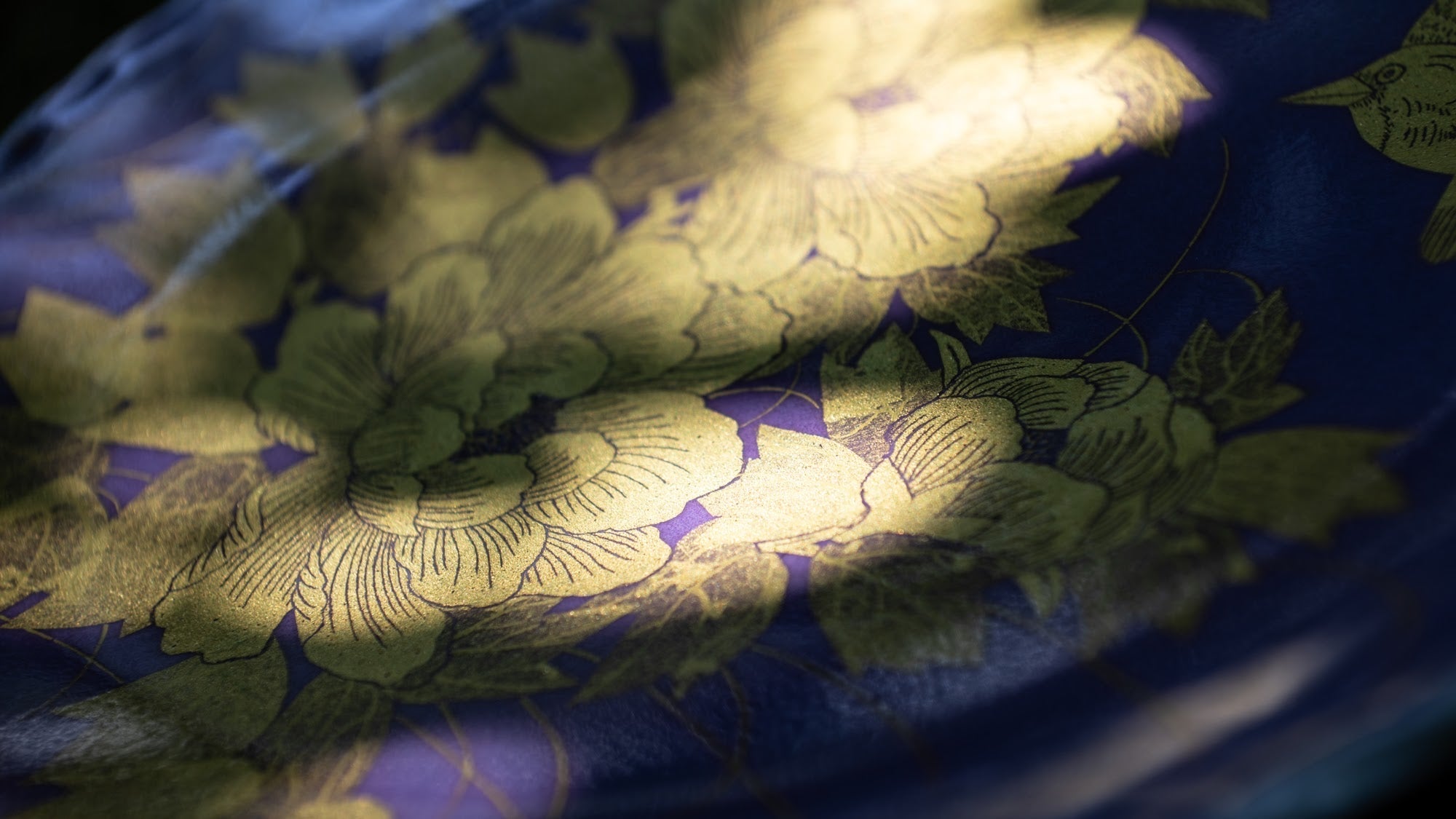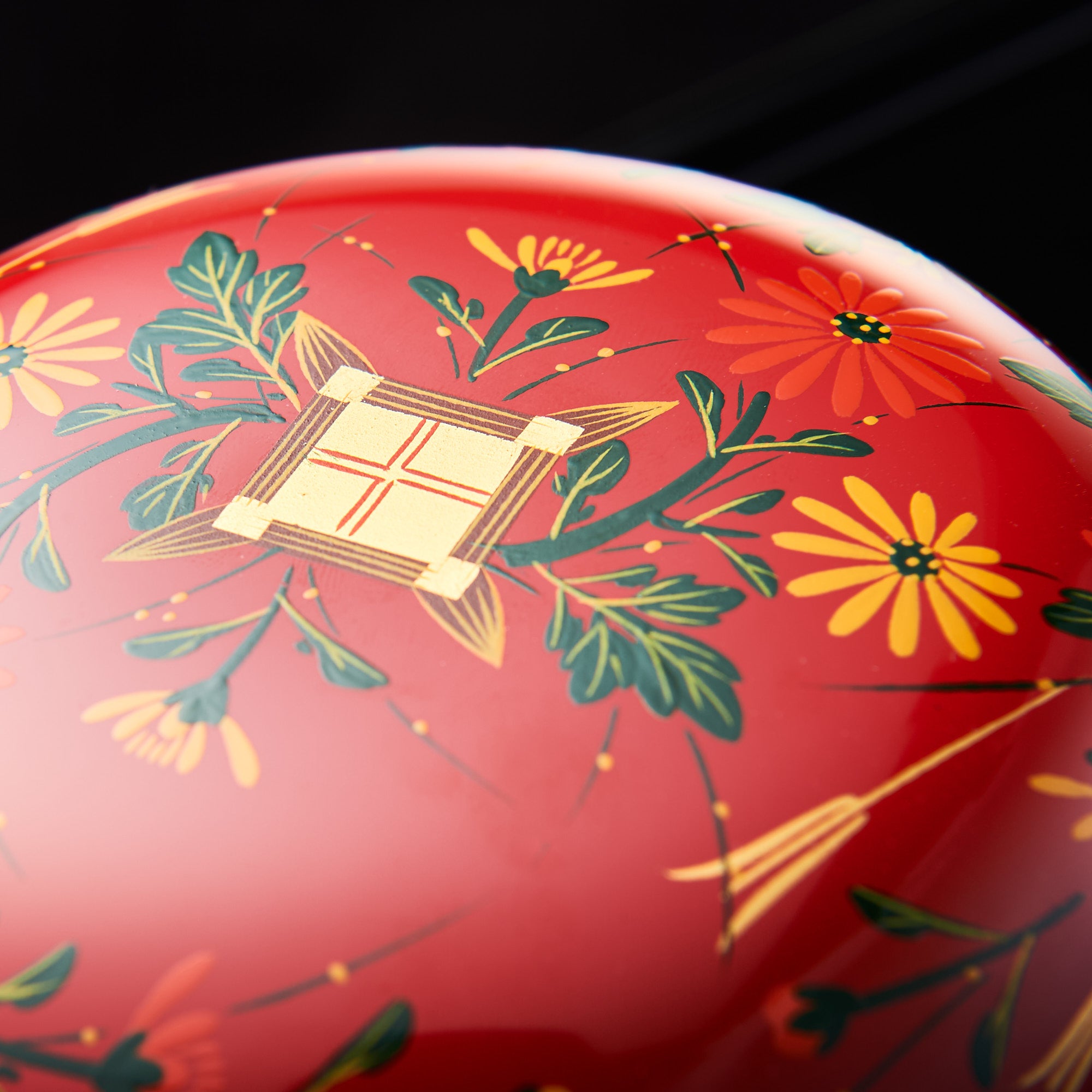

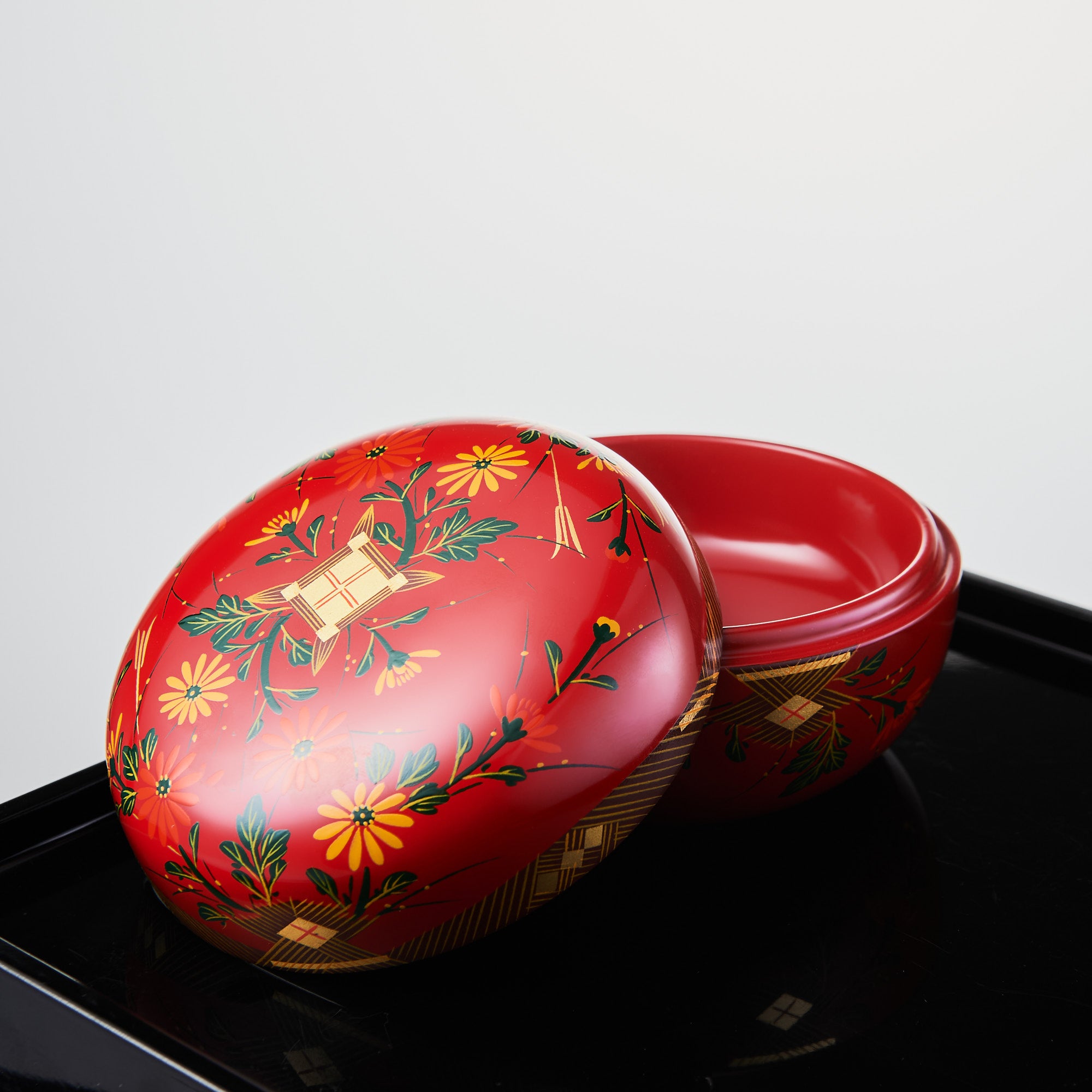
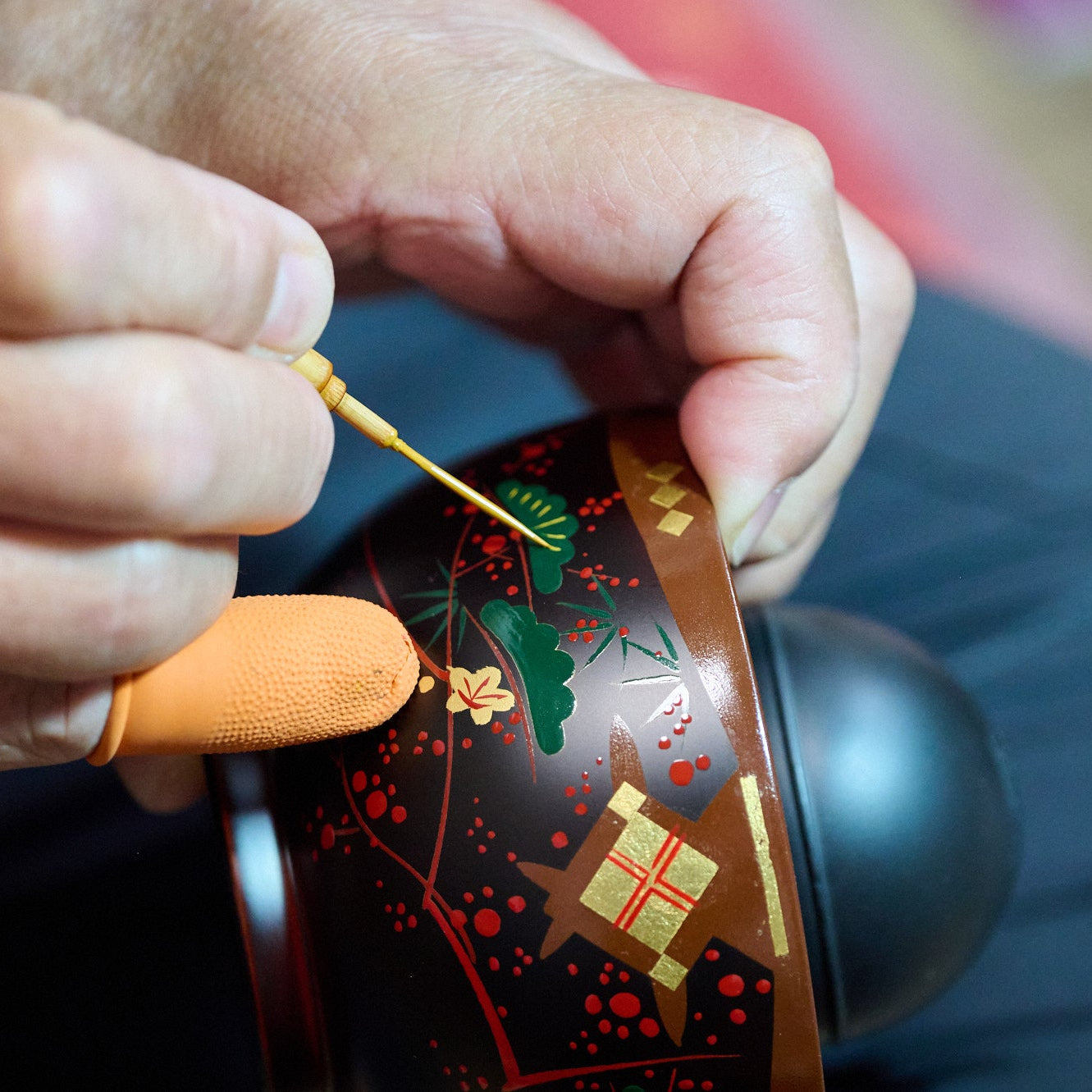
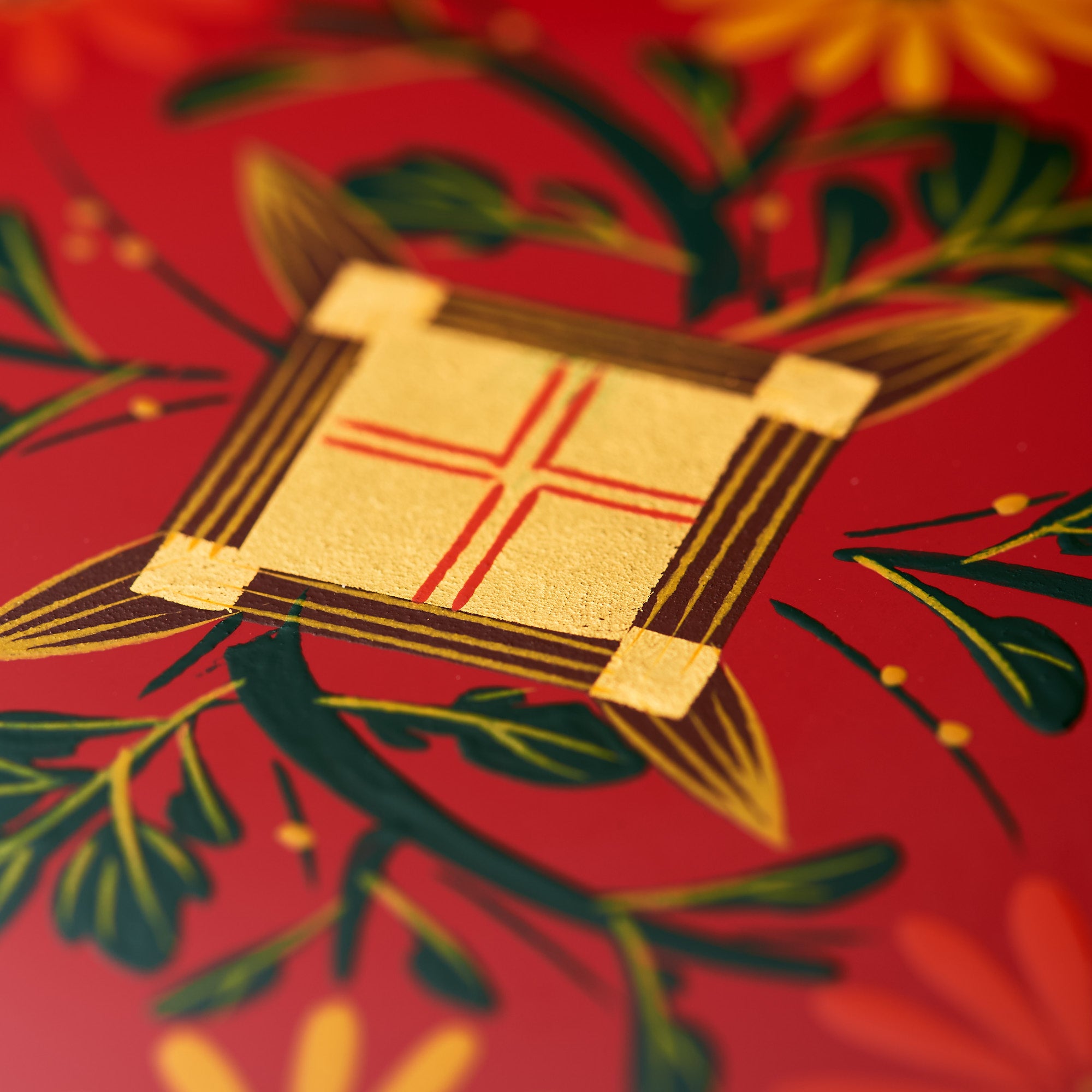
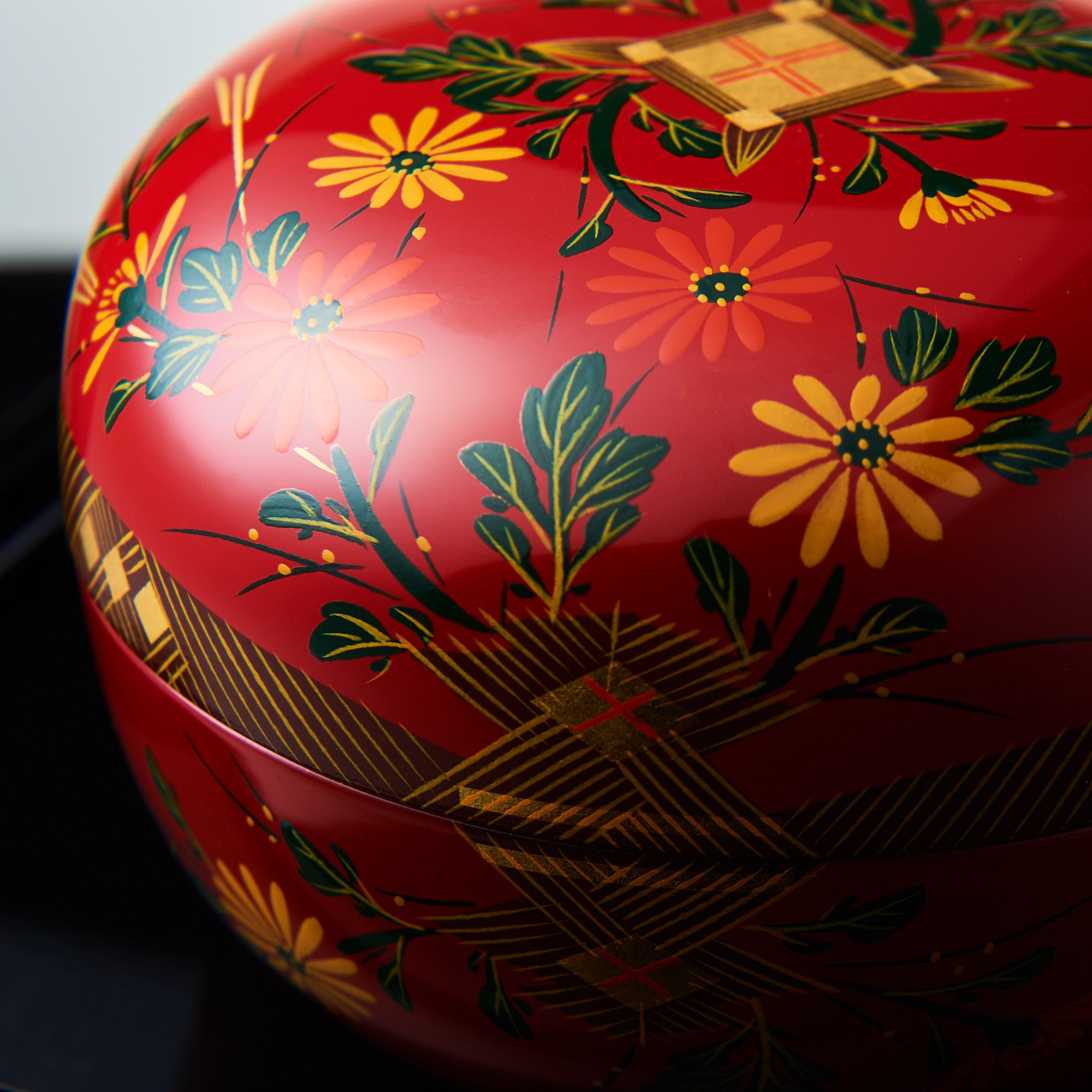
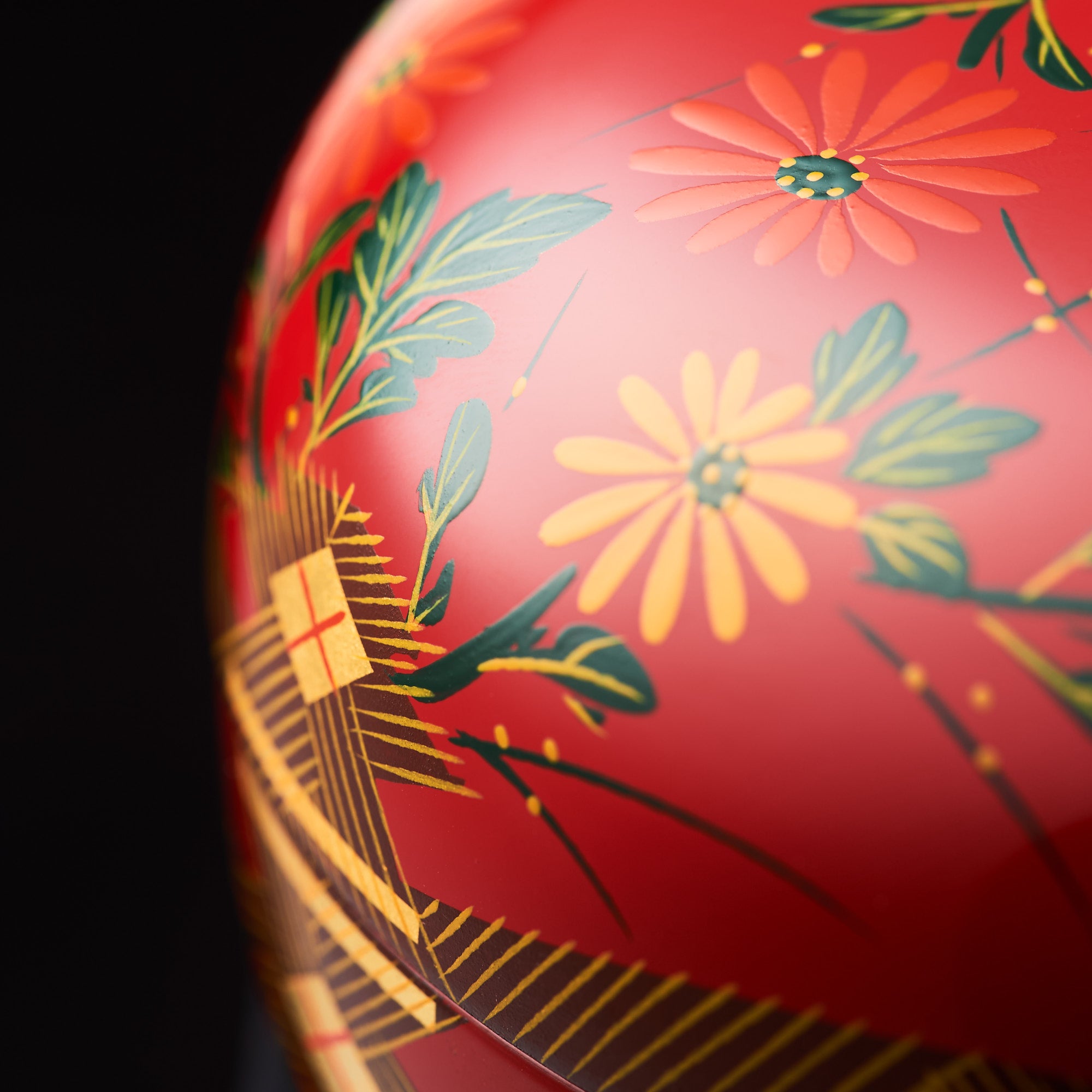
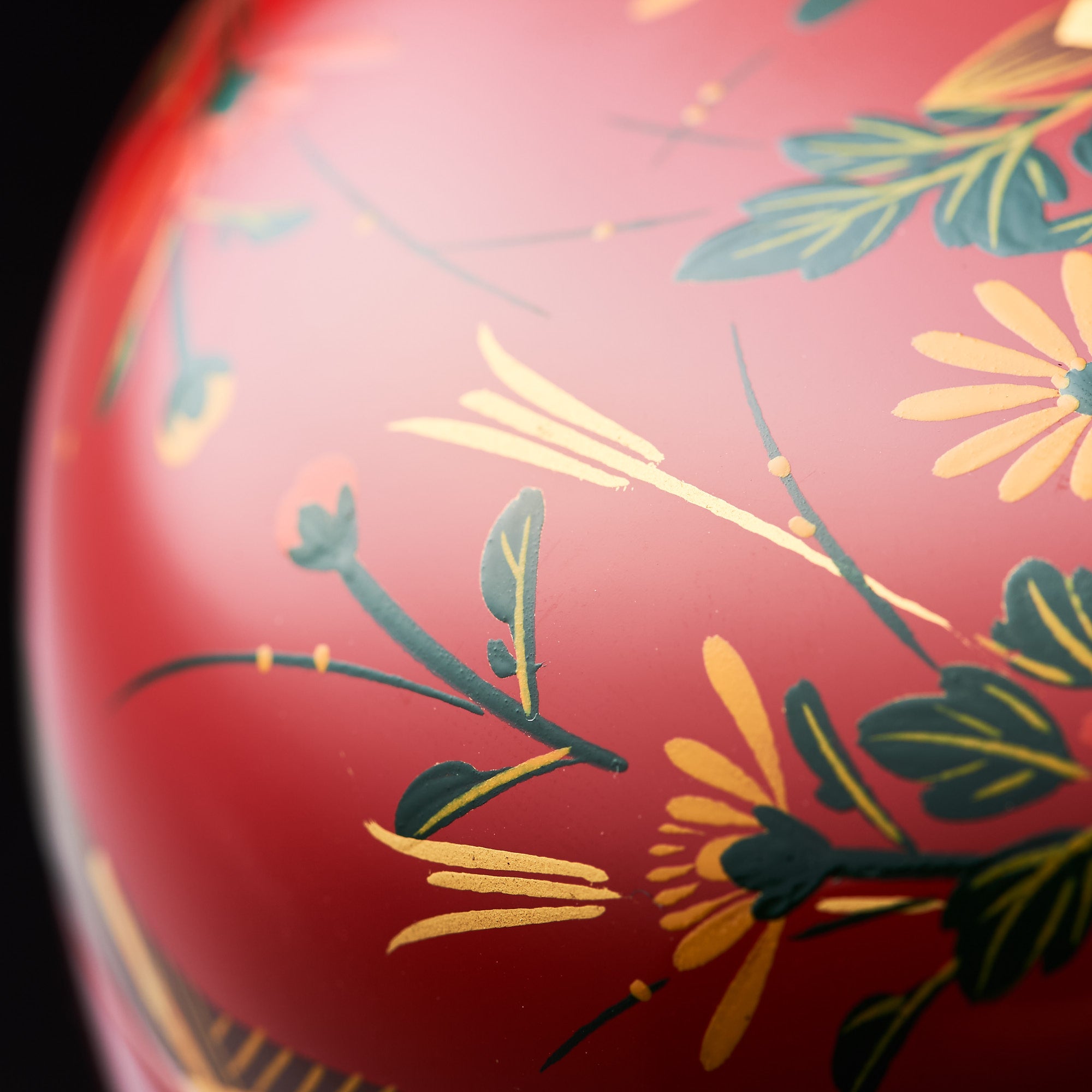

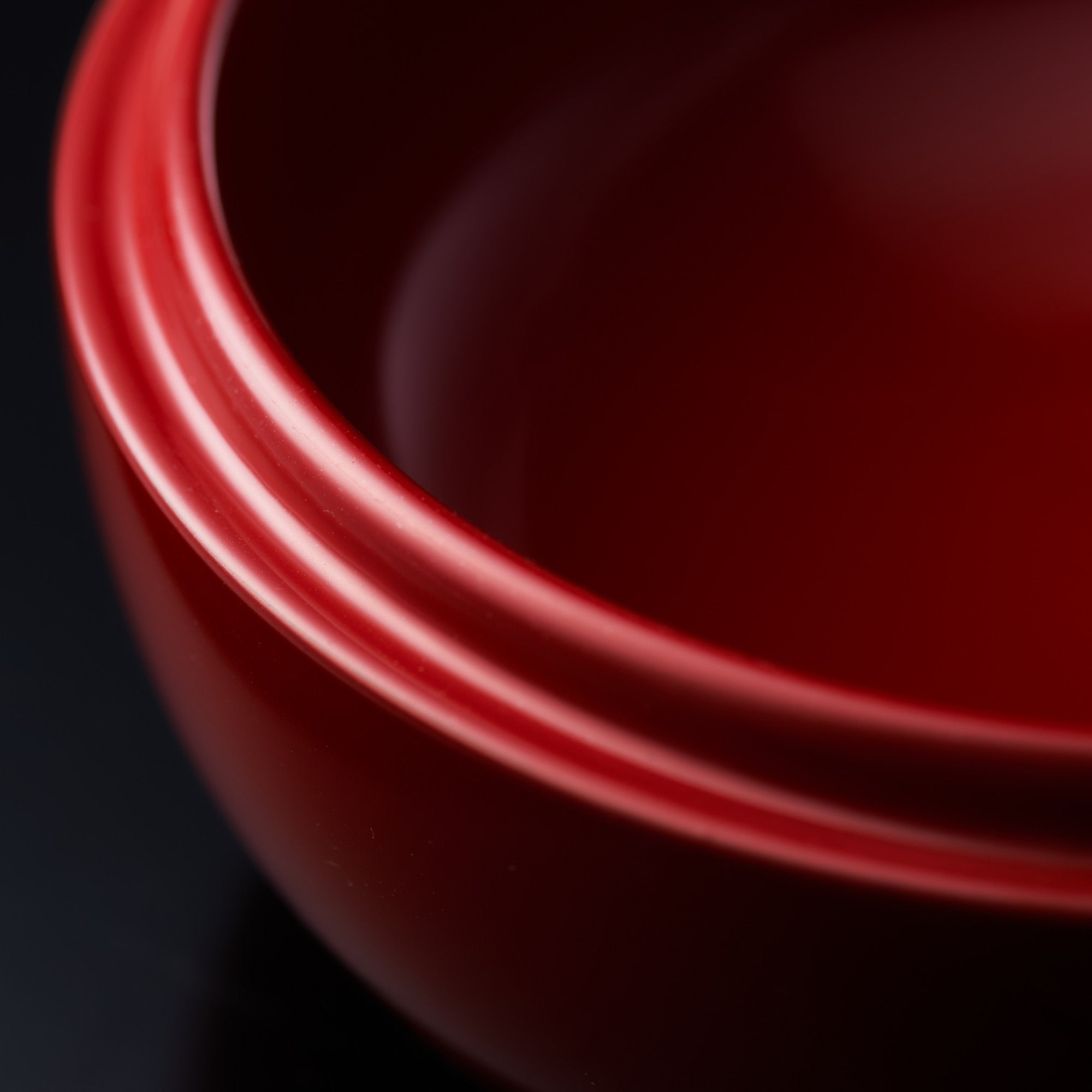



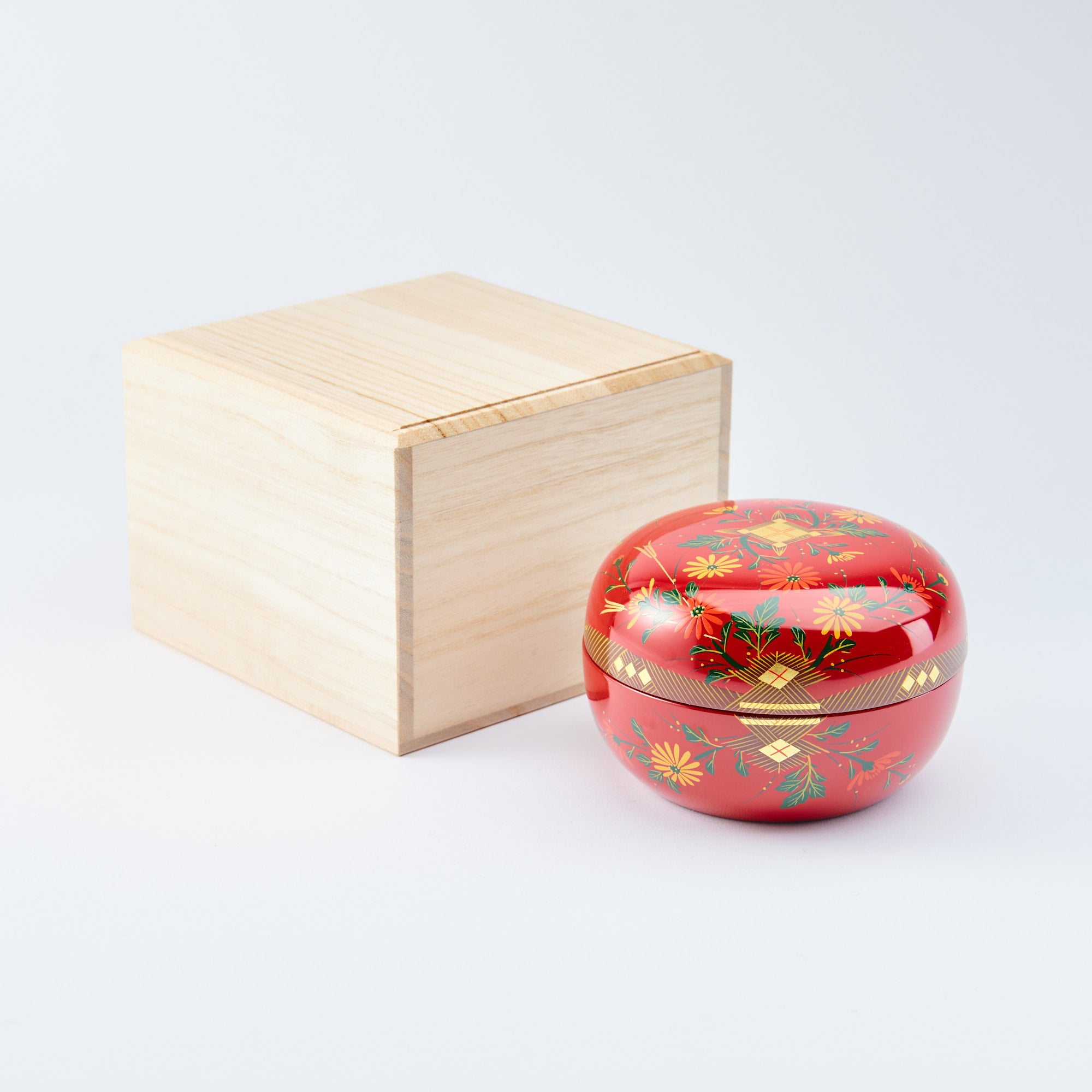

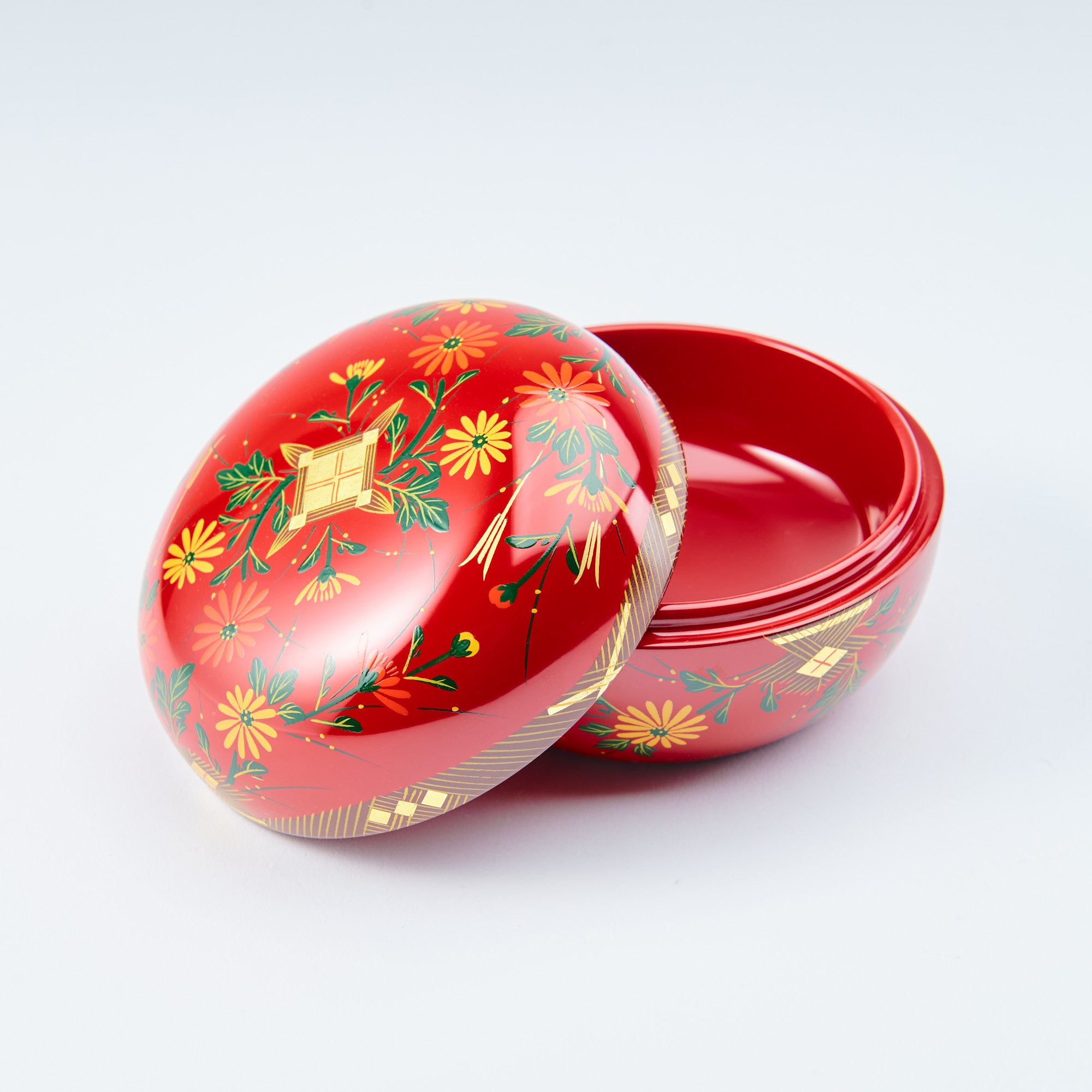
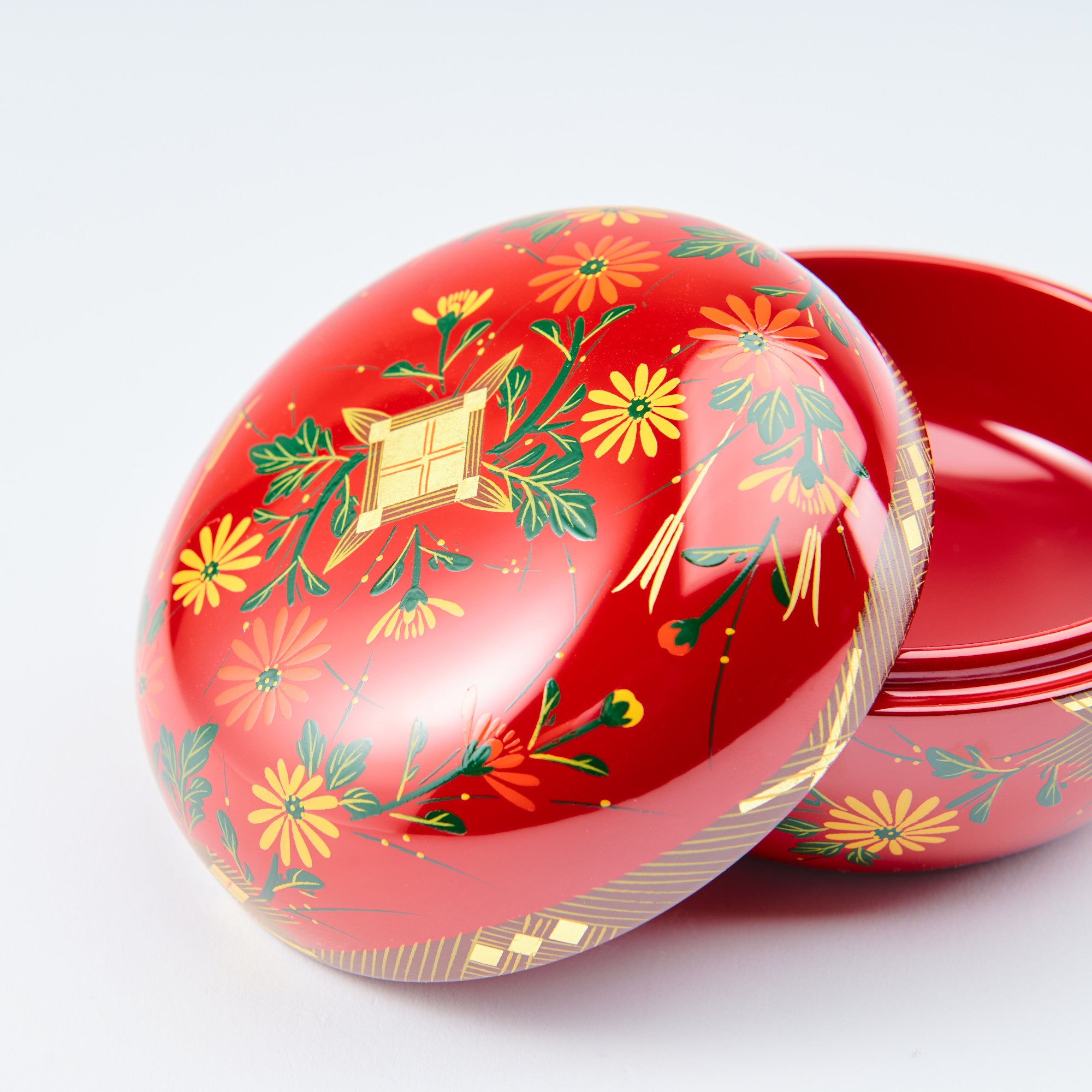
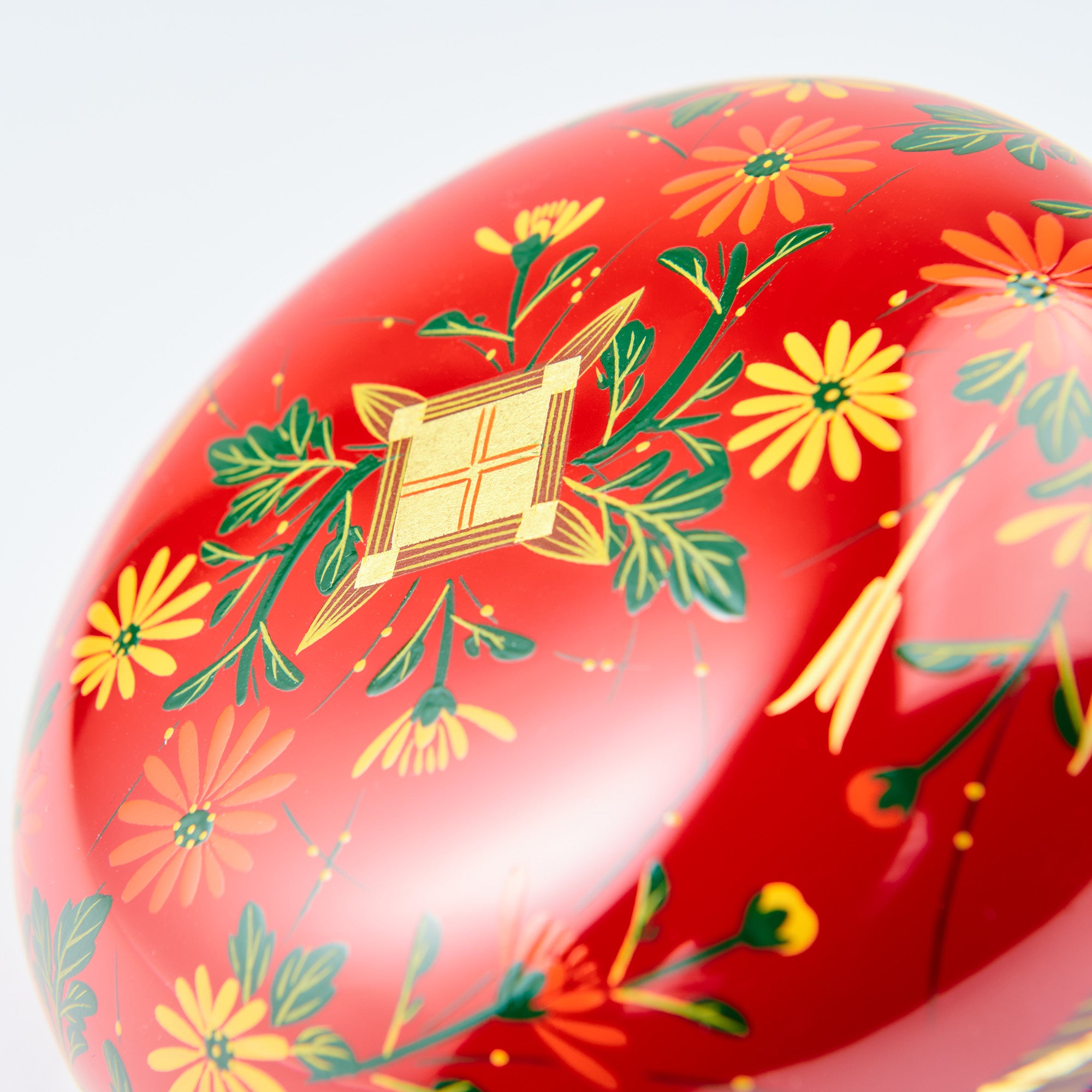
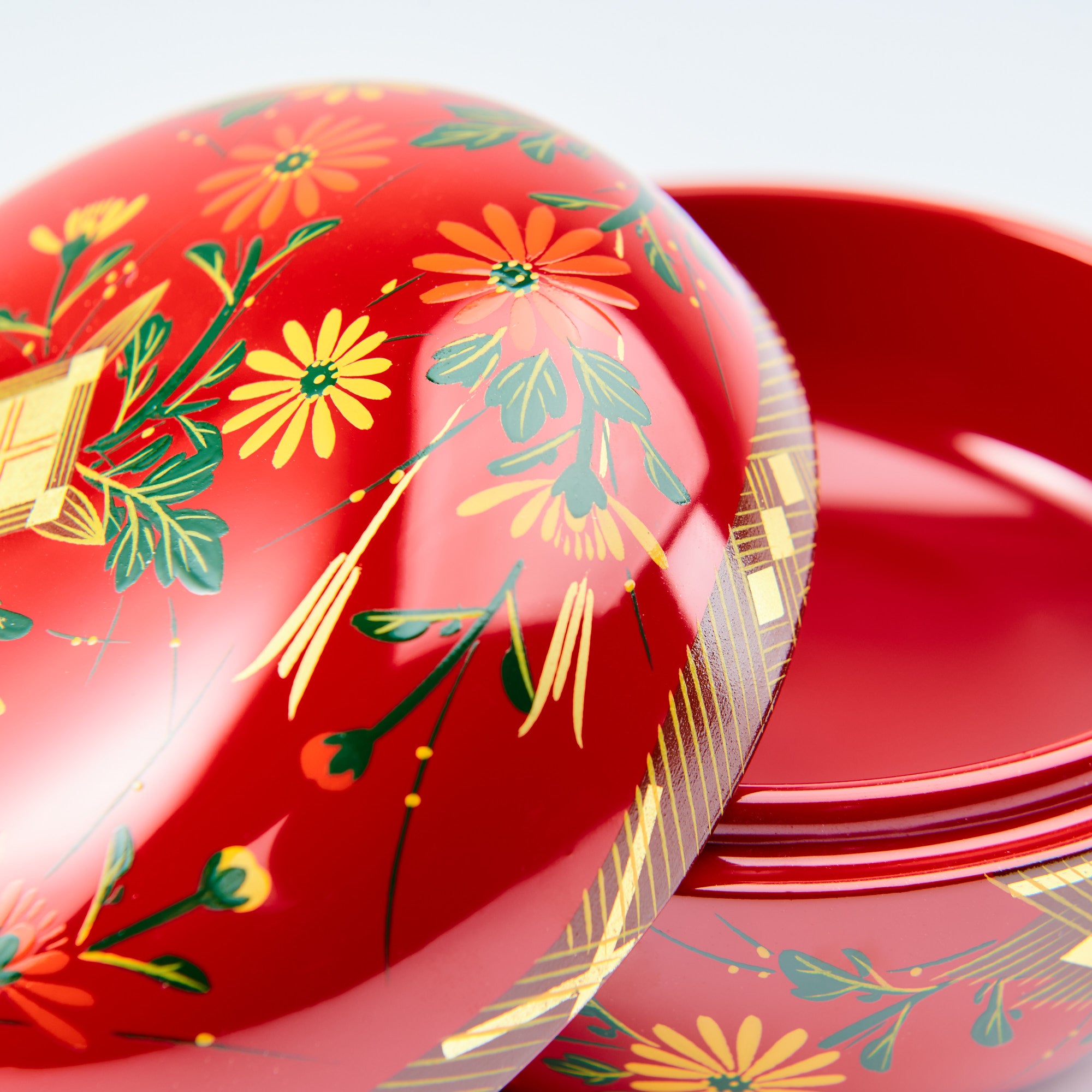



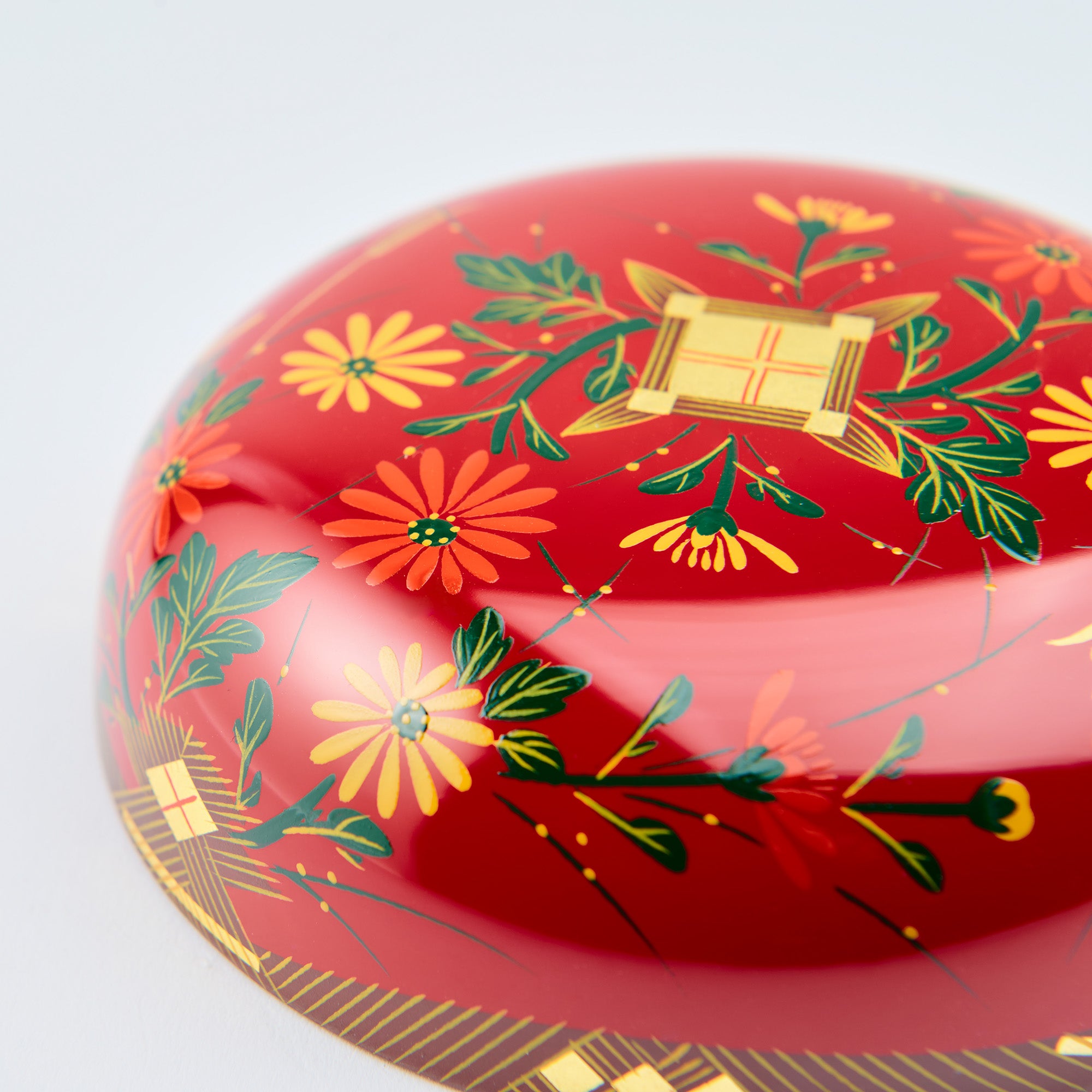
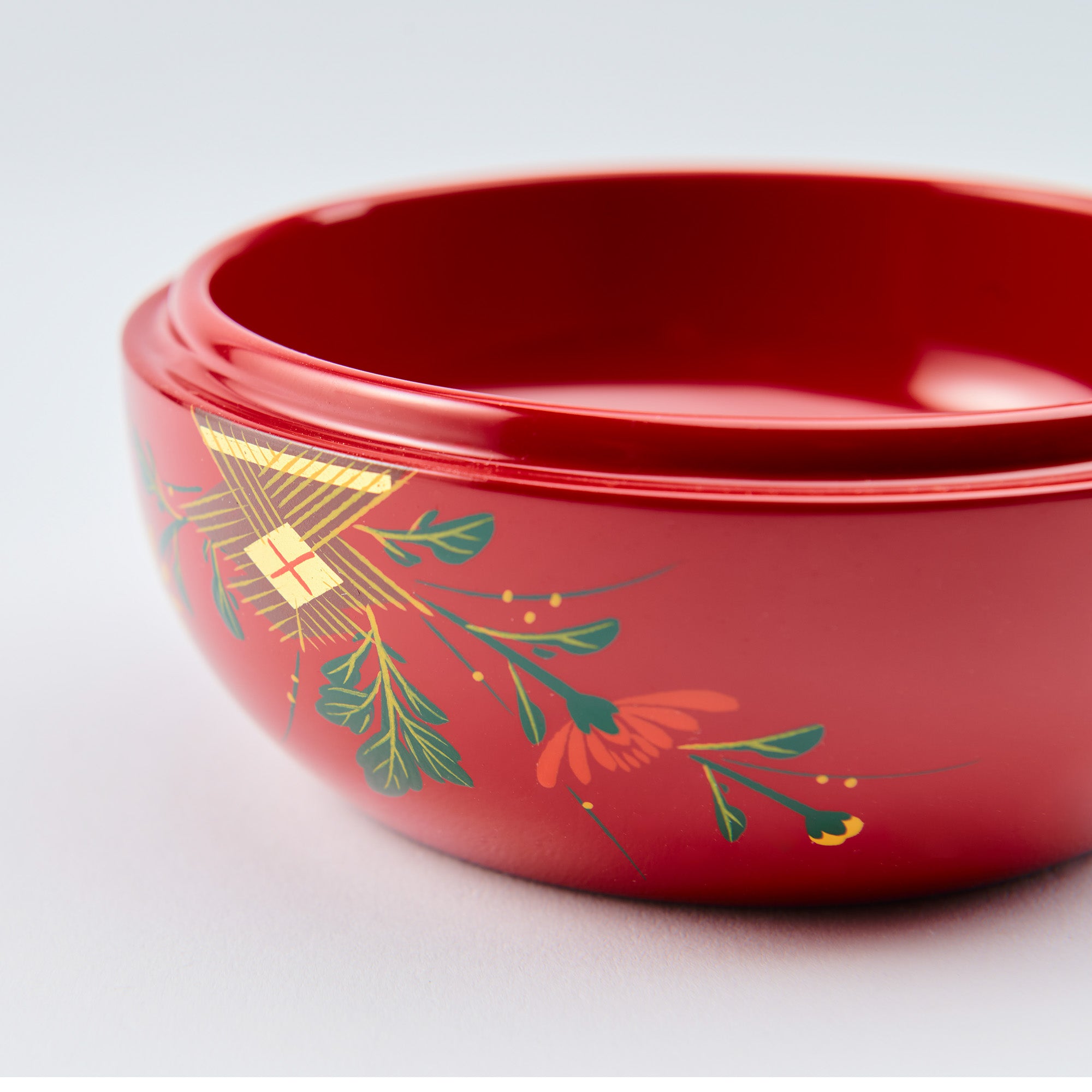
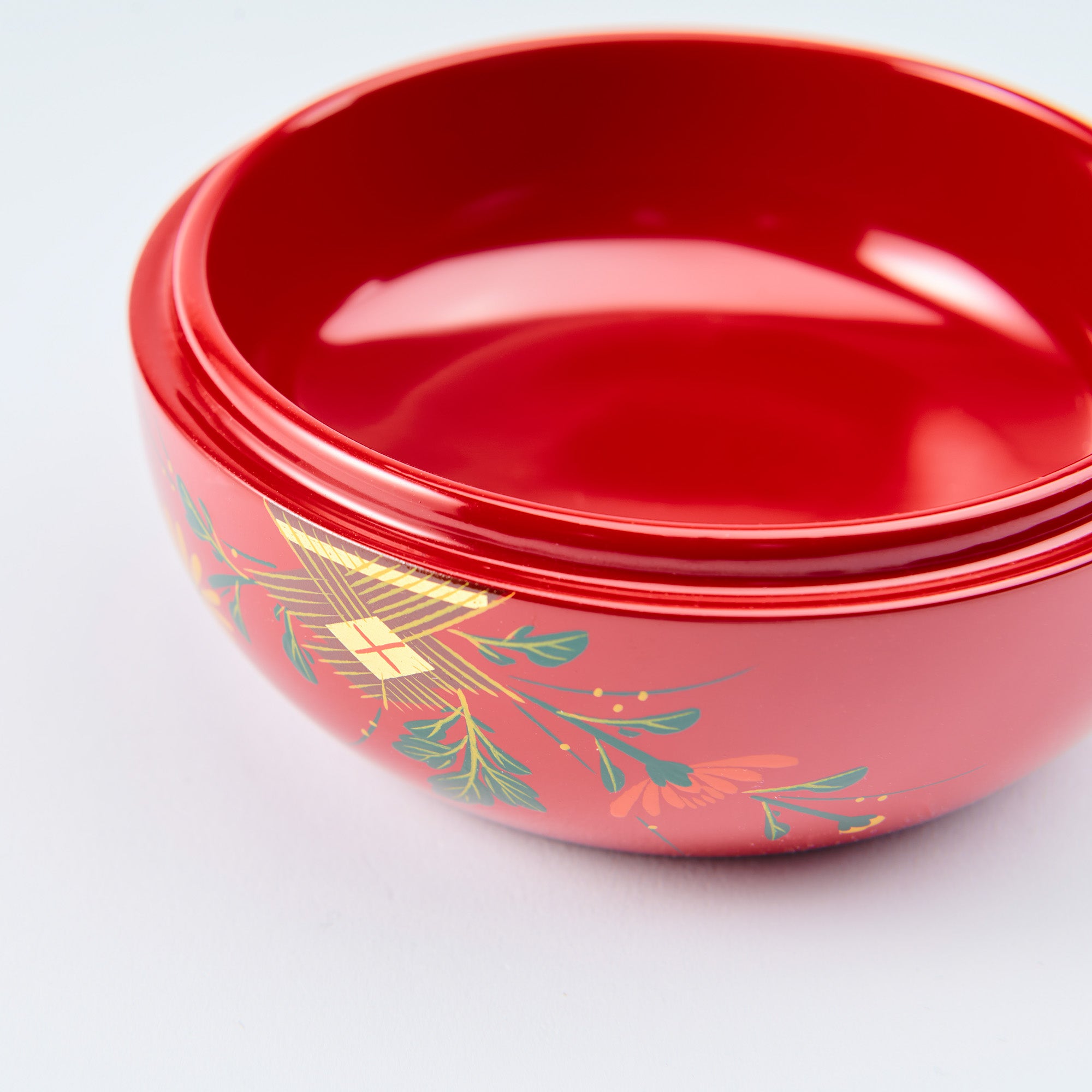
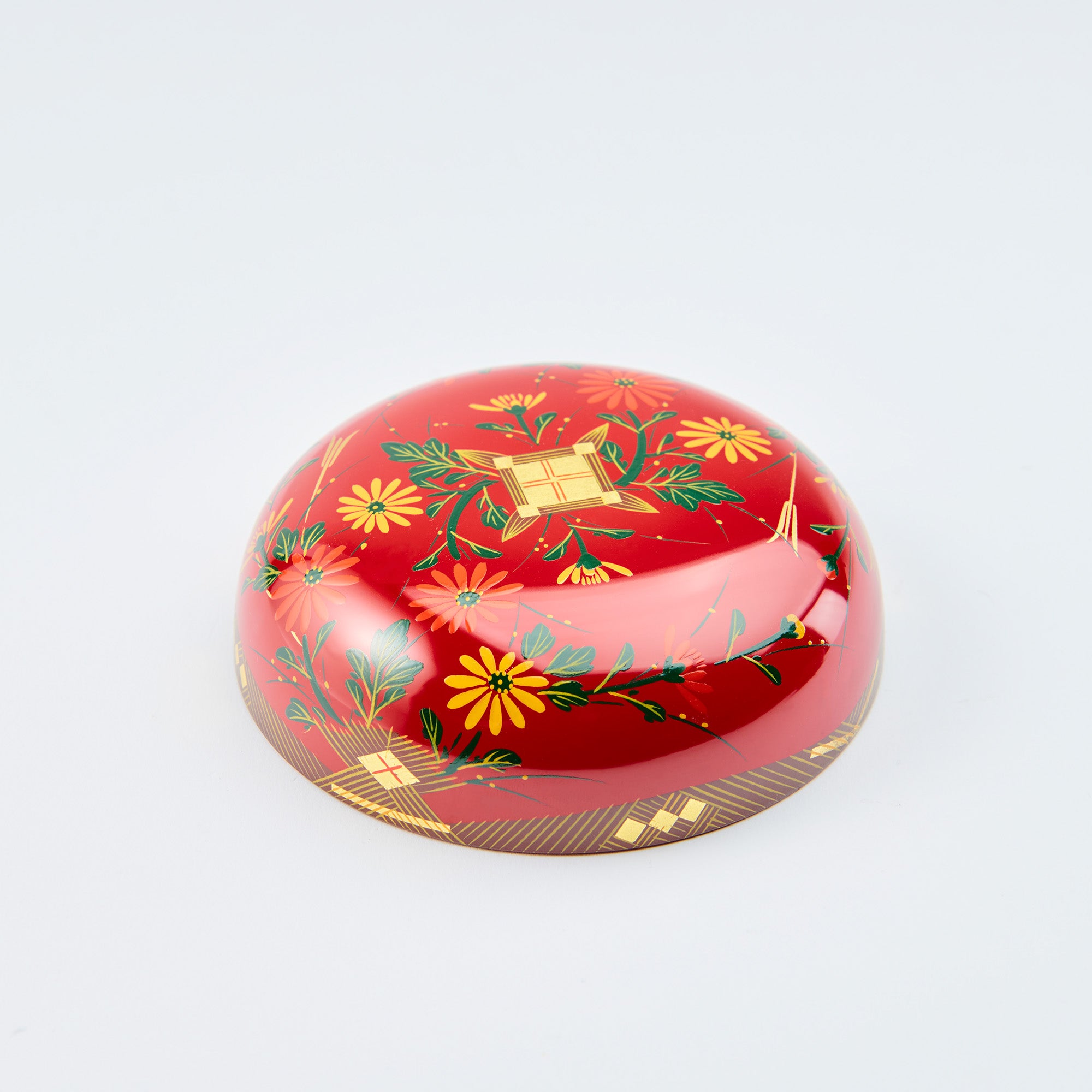

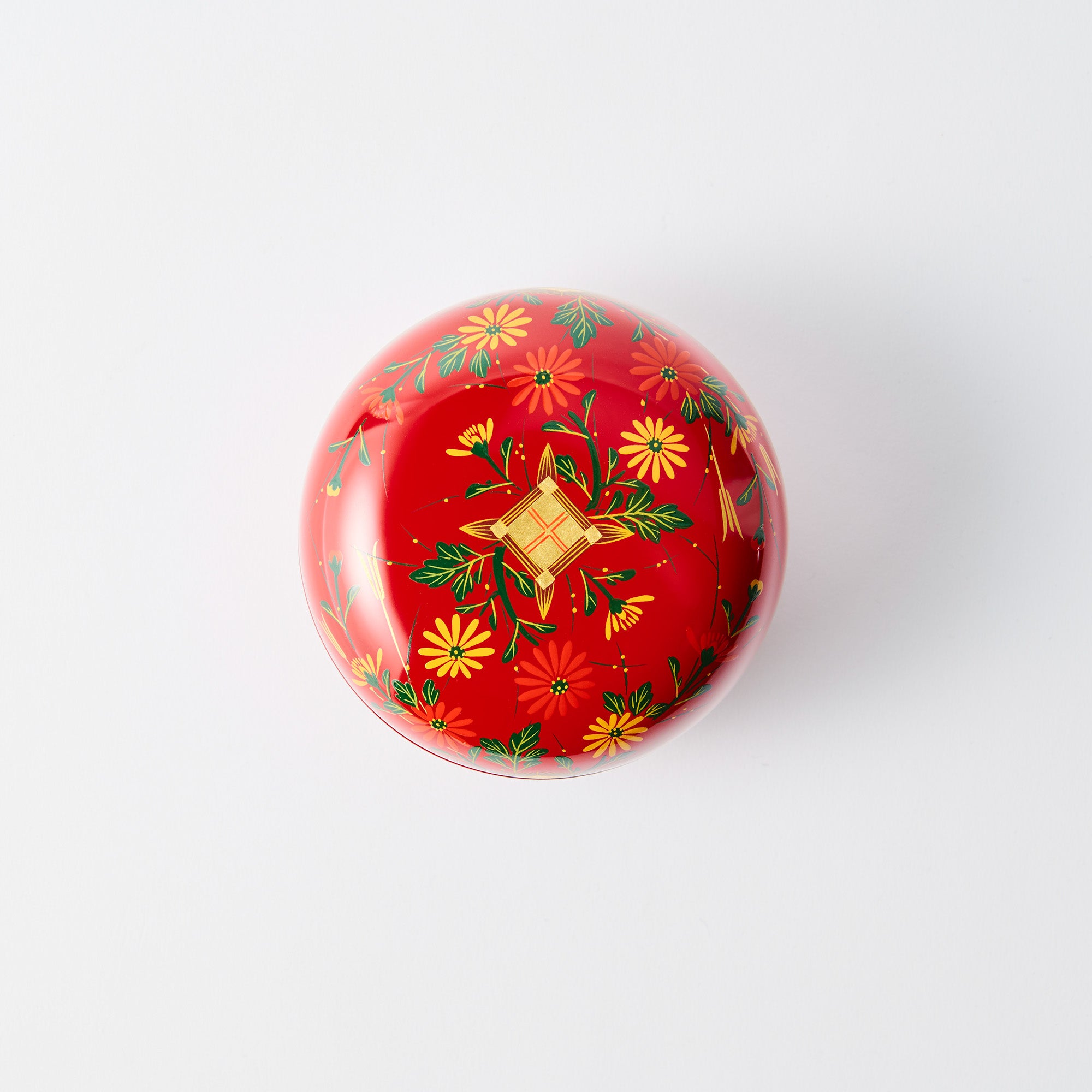
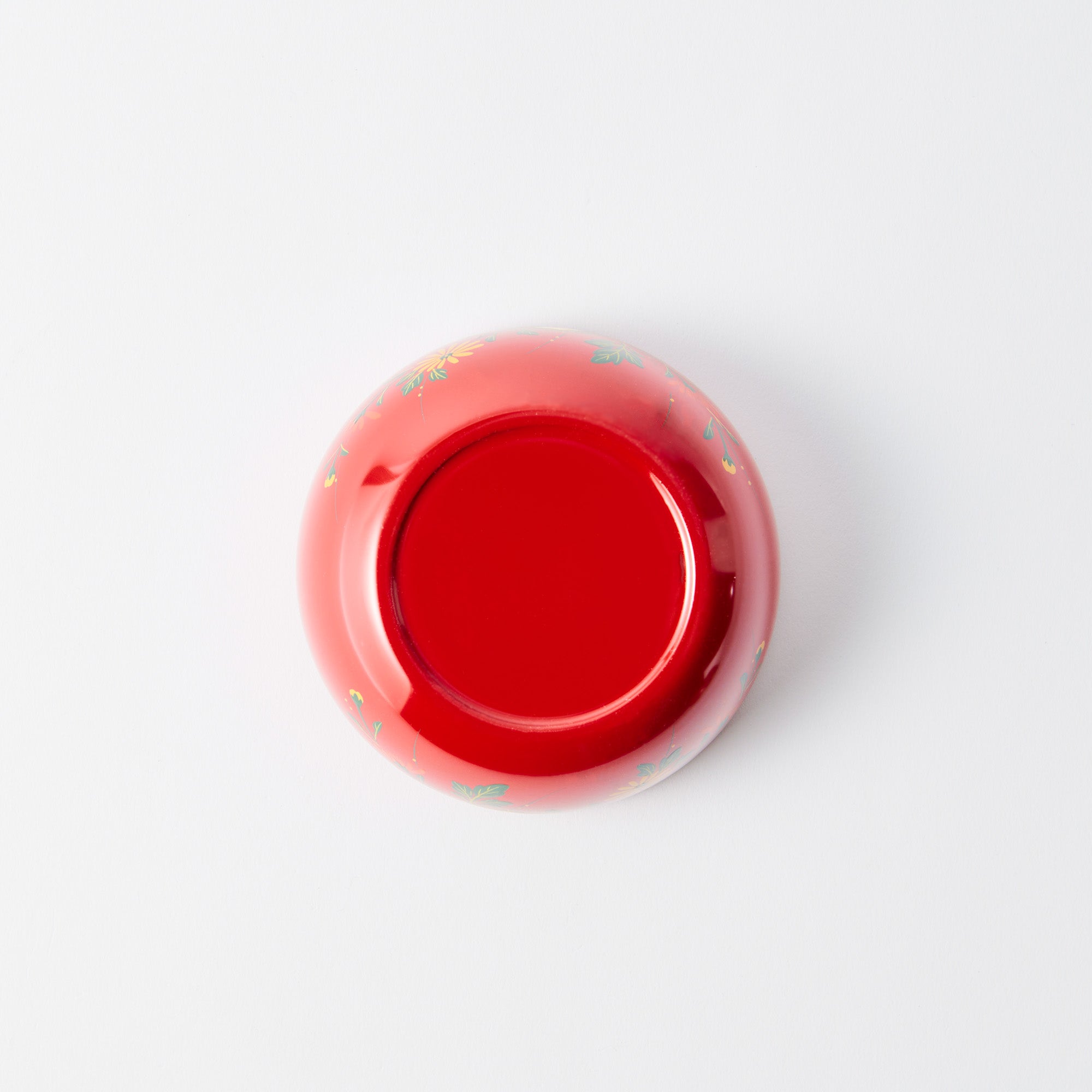
Chrysanthemum Candy Box
The Aizu Lacquer Candy Box by Komatsu Shigeo embodies the refined grace and auspicious symbolism of traditional Japanese craftsmanship. Its gently rounded form is adorned with motifs of chrysanthemums, higaki latticework, and hamaya (evil-dispelling arrows), often associated with good fortune. The chrysanthemum signifies longevity and nobility, while the hamaya invites good luck and wards off misfortune; together, the pairing of flower and arrow conveys a wish for enduring happiness and prosperity.
This candy box is crafted using the time-honored Aizu-e technique of lacquer painting. The process begins with transferring the design onto the surface using a kataoshi (pressing) method, followed by outlining the patterns in bengara urushi (a mixture of iron oxide and natural lacquer). Layers of vermilion and yellow depict the chrysanthemums first, then hamaya motifs are added, and finally green leaves bring the composition into balance. The work is completed with keshikin (a matte gold finish) that tempers luster for an understated yet radiant effect. When viewed from above, the lid reveals chrysanthemums and buds arranged in a symmetrical composition, their disciplined beauty expressing quiet refinement.
Komatsu places great importance on what he calls the “flow of composition,” a harmony between design and form. Each flower and motif is positioned with deliberate balance, following the elegant and colorful sensibility of traditional Aizu-e painting. In rendering the designs, he selects his brushes according to purpose, drawing the delicate lines of petals and the soft curves of leaves with careful precision. Every stage of production is performed entirely by hand, and the subtle fluctuations of the brush lend the piece a quiet warmth and human presence.
DETAILS
| Quantity | 1 |
| Size |
D 11.0 cm (4.3 in) x H 7.5 cm (3.0 in) [inner] D 9.3 cm (3.7 in) |
| Weight | 140 g (4.9 oz) |
| Material |
Wood [Coating] Lacquer |
| Package Type | Wooden box |
| Microwave | No |
| Dishwasher | No |
Maker / Brand
Through the timeless medium of gold and lacquer, Komatsu Shigeo transforms stillness into radiance. He continues Japan’s long tradition of urushi art and the intricate maki-e technique. His maki-e works speak not through extravagance but through calm precision. Every curve, every shimmer, feels measured yet alive, like a breath suspended between motion and rest. Komatsu’s artistry lies in his ability to reveal depth through restraint, distilling centuries of Aizu craftsmanship into forms. The result is not mere ornamentation, but a meditation on the enduring dialogue between hand, material, and time.

Crafts
Aizu-Lackwaren sind ein traditionelles Handwerk aus der Region Aizu im Westen von Fukushima. Eingebettet in ein von Gebirgsketten umgebenes Becken bietet das feuchte Klima der Region ideale Bedingungen für die Lackverarbeitung. Aizu-Lackwaren sind bekannt für ihre glückverheißenden Motive und raffinierten Dekorationstechniken, darunter Aizu-e, mit lebendigen japanischen Blumenmustern und Maki-e, bei dem Goldpulver zur Herstellung komplizierter Designs verwendet wird.
Die Lackwaren von Aizu sind fest in einer über 400-jährigen Tradition verwurzelt und entwickeln sich unter Einbeziehung moderner Techniken ständig weiter, um ihre zeitlose Schönheit mit der Welt von heute zu teilen.

Optionen auswählen
About Artist
Musubi-Galerie
Seit seiner Gründung Musubi Kiln hat sich zum Ziel gesetzt, der Welt die feinsten traditionellen Handwerkskünste von Meistern aus ganz Japan vorzustellen.
Hier in der Galerie präsentieren wir Ihnen die höchste Stufe traditioneller Techniken, die über Generationen weitergegeben wurden. Entdecken Sie Werke von Meistern, die diese Methoden nicht nur perfektioniert, sondern mit ihrer Fantasie das Handwerk noch weiter verbessert haben.
Einige dieser Meister wurden sogar zu „Lebenden Nationalschätzen“ ernannt. Dieser Titel wurde ihnen von der japanischen Regierung verliehen, um ihren Beitrag zum Kunsthandwerk und zur Kultur offiziell anzuerkennen. Dadurch wurde ihr Erbe gefestigt und sie wurden zu einem wichtigen Teil der Kunstgeschichte.
Jedes Stück wird über viele Monate hinweg sorgfältig von Hand gefertigt, um einen zeitlosen Schatz zu schaffen, der seinesgleichen sucht. Und wenn es bei Ihnen zu Hause steht, werden auch Sie Teil dieser Geschichte.
Willkommen in der Galerie. Schauen Sie sich in Ruhe um.
